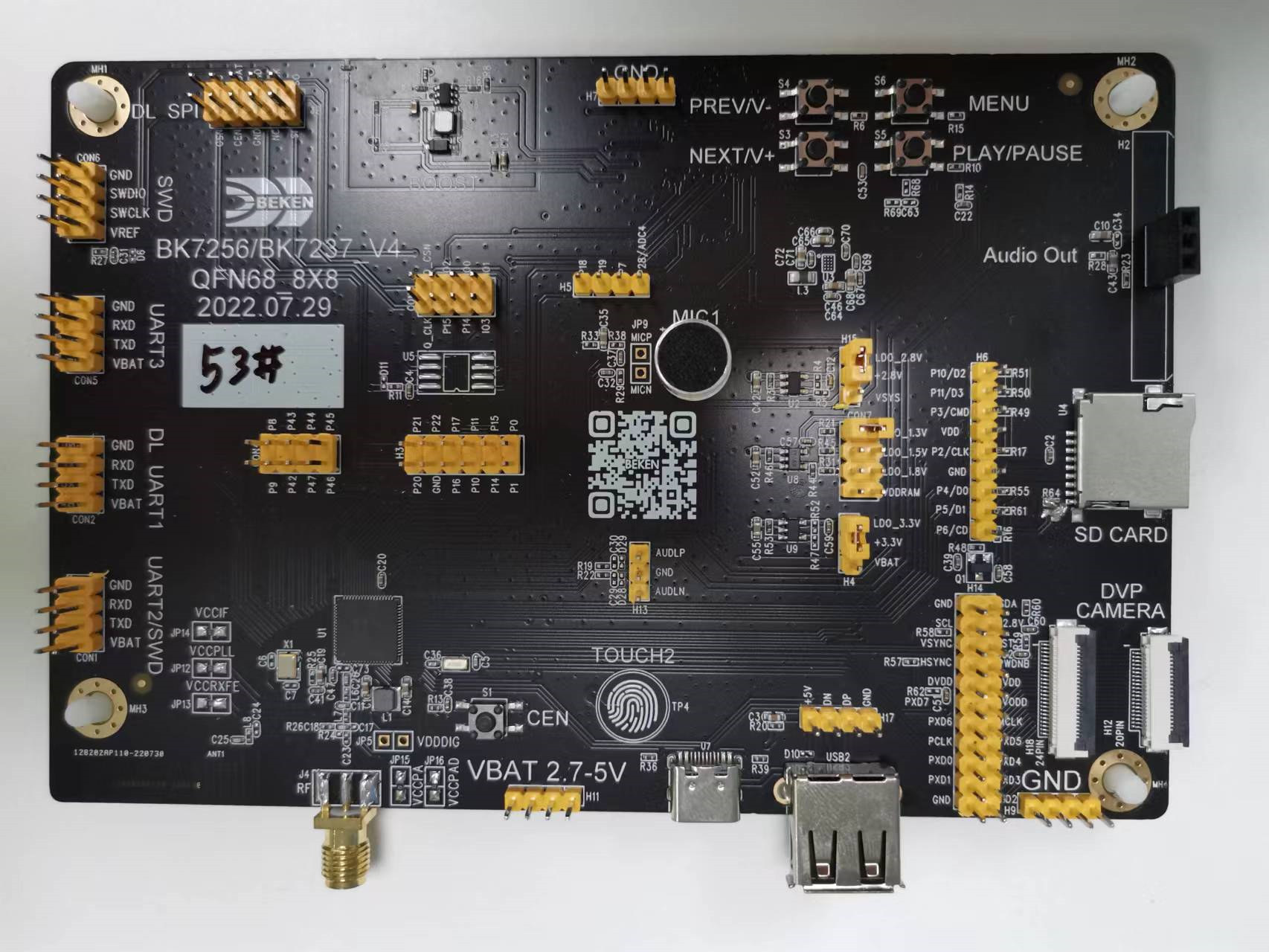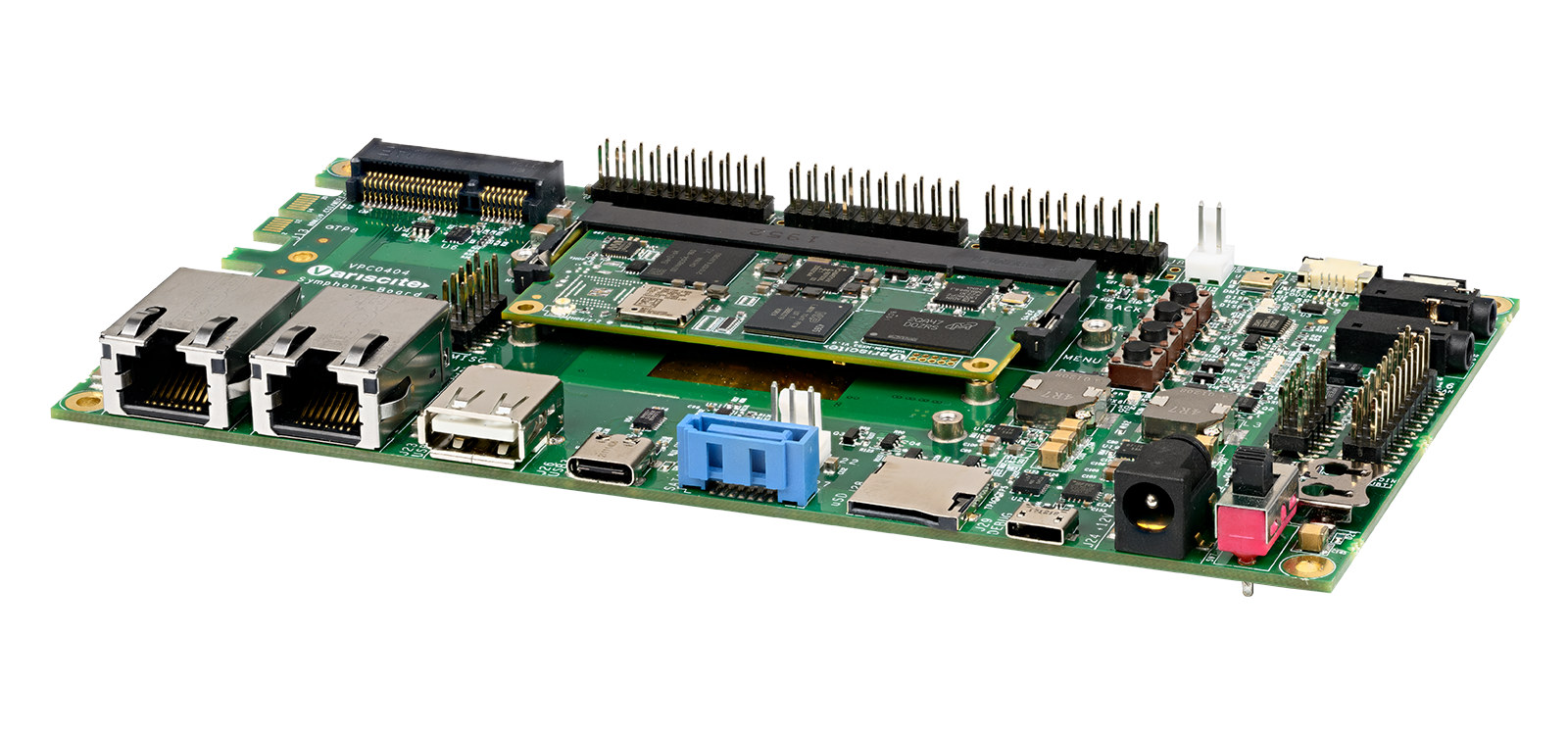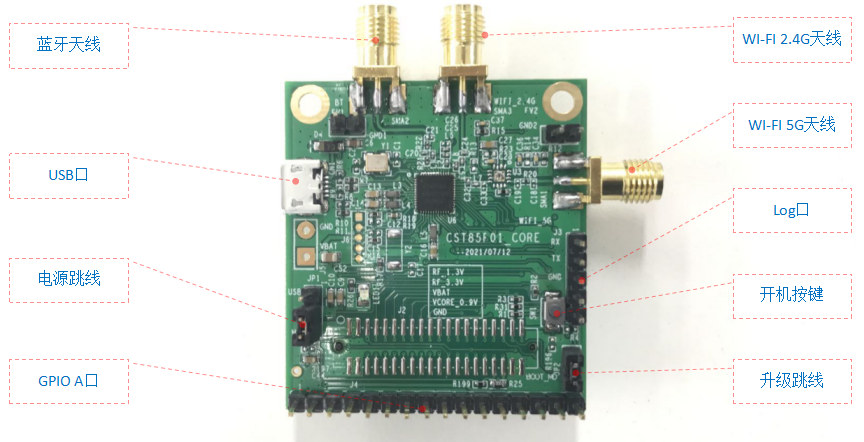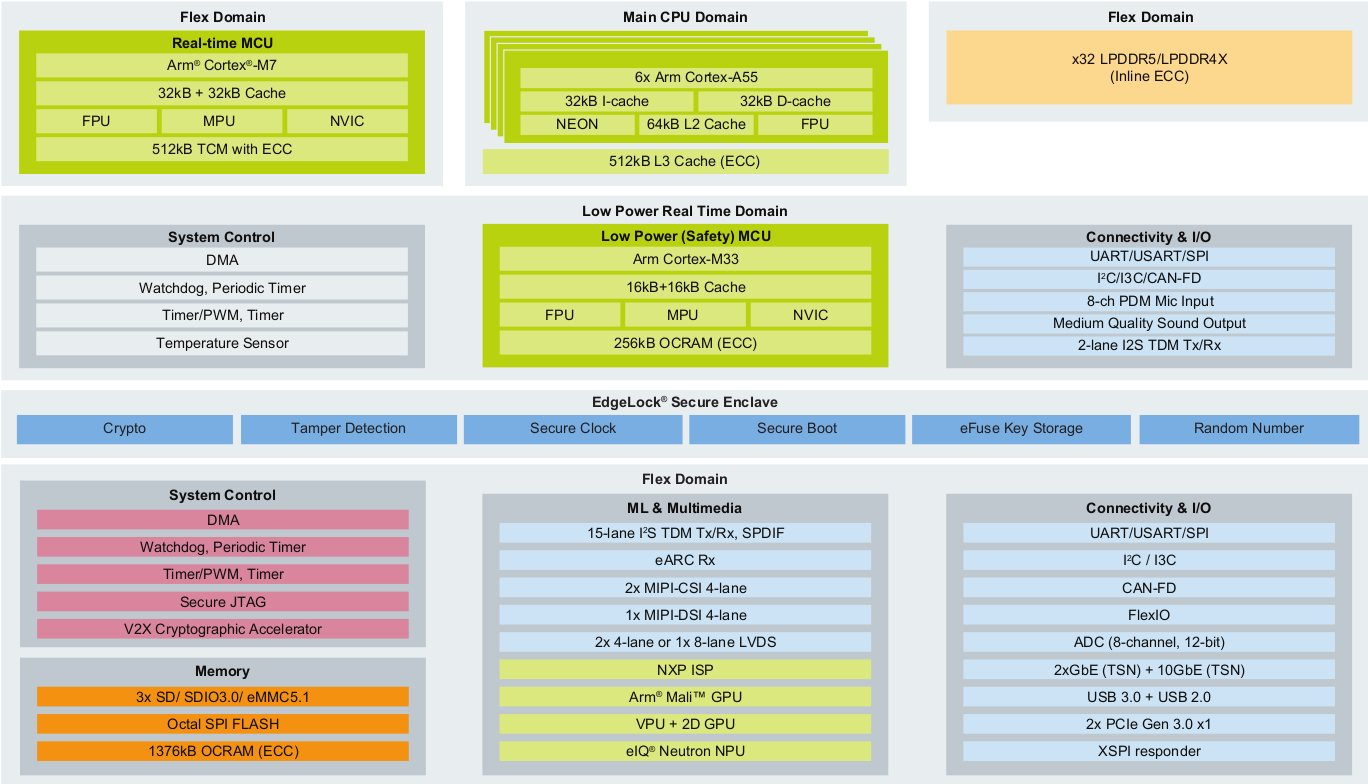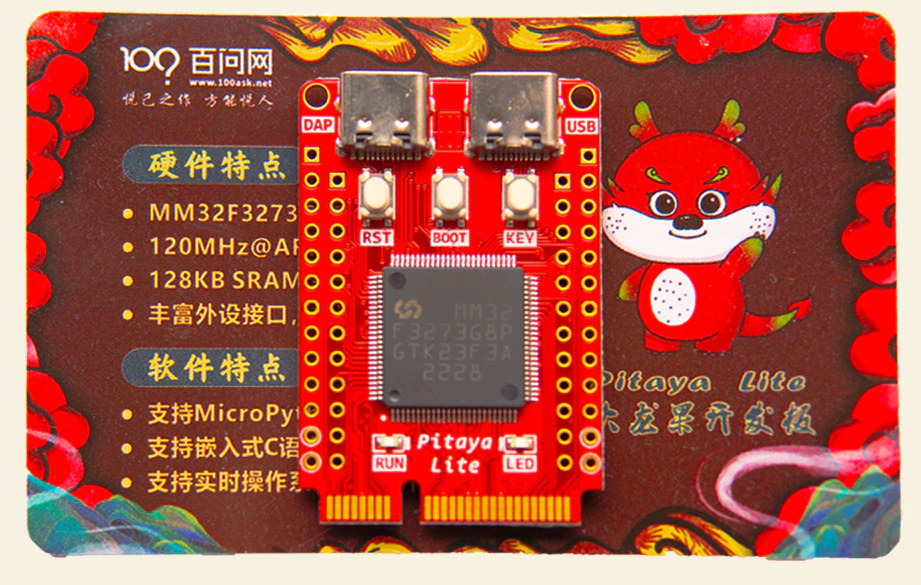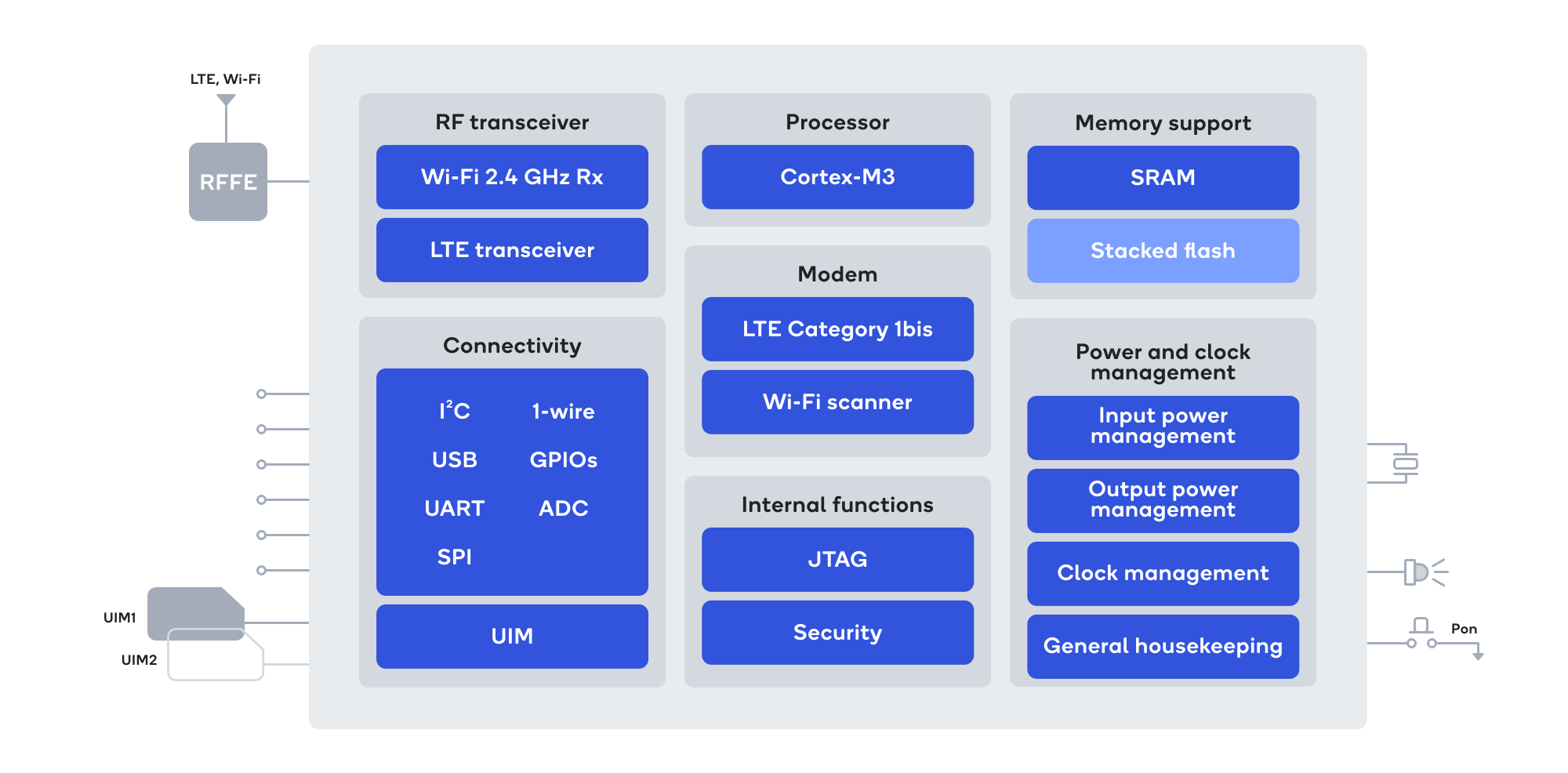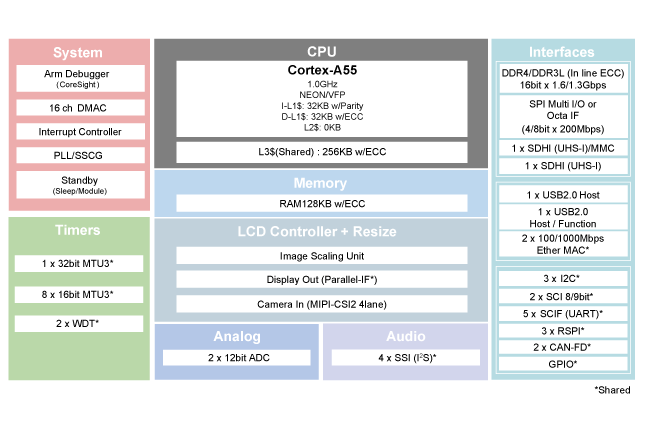Until now, I had only heard about Beken Bluetooth audio chips, but I’ve just been informed the company is also making WiFi chips such as the BK7256 that are notably found in some Tuya Smart Home modules. Beken offers both RISC-V and Arm WiFi and Bluetooth chips with features summarized as follows: BK7235 single-core RISC-V MCU up to 320 MHz with 2.4 GHz WiFi 6 802.11ax and Bluetooth 5.2 LE, 4MB flash, 512KB SRAM, optional 4MB PSRAM BK7236 dual-core Arm MCU up to 120 to 240 MHh with 2.4 GHz WiFi 6 802.11ax and Bluetooth 5.3 dual mode, 4MB flash, 512KB SRAM, optional 4MB PSRAM BK7237 dual-core RISC-V MCU up to 320 MHz with 2.4 GHz WiFi 6 802.11ax and Bluetooth 5.2 dual mode, 4 or 8MB flash, 512KB SRAM, optional 4MB PSRAM BK7256 dual-core RISC-V MCU up to 320 MHz with 2.4 GHz WiFi 6 802.11ax and Bluetooth 5.2 […]
VAR-SOM-MX93 SO-DIMM NXP i.MX 93 SoM features WiFi, Bluetooth, Audio codec
Variscite VAR-SOM-MX93 is a 200-pin SO-DIMM system-on-module based on NXP i.MX 93 dual-core Cortex-A55/M33 AI processor with up to 2 GB LPDDR4 RAM, 64GB eMMC flash, and onboard WiFi & Bluetooth module and audio driver. The Variscite module follows the announcement of two other NXP i.MX 93 system-on-modules, namely the Forlinx FET-MX9352-C with board-to-board connectors and the iWave Systems iW-RainboW-G50M LGA module compliant with OSM Size L form factor to be soldered directly on the carrier board. VAR-SOM-MX93 specifications: SoC – NXP i.MX 93 with up to 2x Cortex-A55 cores @ 1.7GHz, 1x Cortex-M33 real-time co-processor @ 250 MHz, 0.5 TOPS NPU, 2D PxP graphics engine System Memory – 512MB to 2GB LPDDR4 Storage – 8 to 64GB eMMC flash, 4KB EEPROM Ethernet – ADIN1300 Gigabit Ethernet PHY Wireless module Single-band 802.11 b/g/n WiFi 4 or dual-band 802.11 ac/a/b/g/n WiFi 5 Bluetooth 5.2 classic + LE Audio – Unnamed Audio […]
CHIPSEA CST85F01 480 MHz Cortex-M4 MCU supports dual-band WiFi 6 and Bluetooth 5.0 LE
CHIPSEA CST85F01 is an Arm Cortex-M4F microcontroller clocked at up to 480 MHz and designed for IoT applications with dual-band (2.4/5.0 GHz) WiFi 6 with TWT (Target Wake Time) support, Bluetooth 5.0 LE, and a range of I/Os. Following the recent availability of 2.4 GHz WiFi 6 IoT chips such as Espressif Systems ESP32-C6 and Bouffalo Lab BL616, CHIPSEA CST85F01 offers an alternative with dual-band WiFi 6 connectivity while we are waiting for the launch of the ESP32-C5 RISC-V microcontroller. CST85F01 specifications: CPU core – Arm Cortex-M4F CPU with MPU and FPU @ up to 480 MHz Memory – 992 KB SRAM, SDR/DDR PSRAM interfaces Storage – 752 KB ROM, 8 Mbit to 128 Mbit flash WiFi features 2.4GHz/5GHz Wi-Fi 6 Data rates up to 286.8 Mbps (Tx) and 229.4 Mbps (Rx) with 20/40 MHz bandwidth Rx sensitivity – -98dBm in 11b mode, -93.5dBm in MCS0 HT20 mode Tx power […]
NXP i.MX 95 processor features Cortex-A55, Cortex-M33, and Cortex-M7 cores, eIQ Neutron NPU
NXP i.MX 95 is an upcoming Arm processor family for automotive, industrial, and IoT applications with up to six Cortex-A55 application cores, a Cortex-M33 safety core, a Cortex-M7 real-time core, and NXP eIQ Neutron Neural Network Accelerator (NPU). We’re just only starting to see NXP i.MX 93 modules from companies like iWave Systems and Forlinx, but NXP is already working on its second i.MX 9 processor family with the i.MX 95 application processor family equipped with a higher number of Cortex-A55 cores, an Arm Mali 3D GPU, NXP SafeAssure functional safety, 10GbE, support for TSN, and the company’s eIQ Neutron Neural Processing Unit (NPU) to enable machine learning applications. NXP i.MX 95 specifications: CPU Up to 6x Arm Cortex-A55 cores with 32KB I-cache, 32KB D-cache, 64KB L2 cache, 512KB L3 cache with ECC 1x Arm Corex-M7 real-time core with 32KB I-cache, 32KB D-cache, 512KB TCM with ECC 1x Arm Cortex-M33 […]
$4 DshanMCU Pitaya Lite board comes with MM32 Arm Cortex-M3 microcontroller
DshanMCU Pitaya Lite is an MCU development board based on yet another STM32 alternative: MindMotion MM32 Arm Cortex-M3 microcontroller that is said to be compatible with STM32. The MCU can be clocked at up to 120 MHz, embeds 128KB SRAM, 512KB flash, and the board offers two USB Type-C ports for USB and DAP debugging, a MicroSD card slot, a few buttons, I/Os are routed via through holes as well as a mini PCIe connector that can be used to connect a display. Pitaya Lite specifications: MCU – MindMotion Microelectronics MM32F3273G8P Arm Cortex-M3 microcontroller @ 96MHz (standard) to 120MHz (max) with 128KB SRAM, 512kB Flash; LQFP100 package Storage – MicroSD card Display – Via mini PCIe port with FSMC (Flexible Static Memory Controller), supports Intel 8080 LCDs USB – 2x USB Type-C ports, including one for DAPLink and serial access Expansion – 2x 25-pin GPIO headers and Mini PCIe connector […]
Qualcomm QCX216 LTE Cat1 bis IoT-optimized modem integrates WiFi-based terrestrial positioning
Qualcomm QCX216 is a new IoT-optimized LTE Cat1 bis modem with a data rate of up to 10 Mbps at ultra-low power and support for WiFi-based terrestrial positioning thanks to the company’s database of billions of geolocated beacons. LTE Cat1 bis is an update to LTE Cat1 that does not require software and hardware upgrades to the base stations, enables smaller, simpler, and cheaper designs with a single antenna, and delivers higher speeds than LTE Cat M1 typically used in IoT applications. Qualcomm QCX216 LTE IoT modem will be used in smart utility meters, trackers, e-mobility solutions, parking meters, home automation and security equipment, and other location-based solutions. Qualcomm QCX216 specifications: SoC – Qualcomm 216 LTE IoT modem with dual-core Cortex-M3 @ 204 MHz, cellular modem-RF Wireless Cellular Peak Download Speed: 10 Mbps Peak Upload Speed: 5 Mbps Cellular Technology: Rel.14 LTE, Global LTE Cat 1bis Multi SIM: Dual SIM/eSIM […]
DongshanPI-D1s – An Allwinner D1s RISC-V development board designed to teach programming
The DongshanPI-D1s development board is comprised of a soldered-on Allwinner D1s RISC-V system-on-module board (SoM) and a carrier board with two 40-pin headers and a 2.0mm dedicated header. This development board is specifically designed to teach programming with a focus on the RISC-V architecture. The development board was designed by 100ask. They previously designed the Dongshan NeZha STU a development board based on the Allwinner D1. The main difference between the two is that 100ask did not include the Ethernet and HDMI interfaces on the DongshanPI-D1s board. The pinout of the headers is also slightly different because they opted to make the headers compatible with the widely used 40-pin GPIO from Raspberry Pi single board computers. DongshanPI-D1s preliminary specifications: D1s Core Lite SoC – Allwinner D1s single-core XuanTie C906 64-bit RISC-V processor @ 1.0 GHz with with 32 KB I-cache + 32 KB D-cache Memory – 64 MB DDR2 (SIP) […]
Renesas RZ/A3UL Cortex-A55 CPU runs RTOS for HMI with quick startup times
Renesas RZ/A3UL is a single-core Cortex-A55 processor clocked at up to 1 GHz designed to run FreeRTOS or Azure RTOS on high-definition (1280×800) HMI solutions requiring quick startup times such as industrial equipment, home appliances, office automation equipment, audio equipment, and POS terminals. The new RZ/A3UL processor family has the same peripheral functions and package pin assignments as the RZ/G2UL (Arm Cortex-A55/M33) and RZ/Five (RISC-V) families targeting Linux-based HMI applications. Renesas also designed a SMARC 2.1 compliant System-on-Module (SoM) based on the Renesas RZ/A3UL microprocessor to speed up time to market. Renesas RS/A3UL specifications: CPU – Single-core Arm Cortex-A55 processor @ up to 1.0 GHz with 32KB I-cache with parity, 32KB D-cache with ECC, 256KB L3 cache with ECC Internal Memory – 128KB SRAM with ECC Memory & Storage I/F 16-bit DDR4-1600 or DDR3L-1333 memory interfaces with in-line ECC; up to 4GB RAM Octal Peripheral Interface (OPI) for flash or […]


